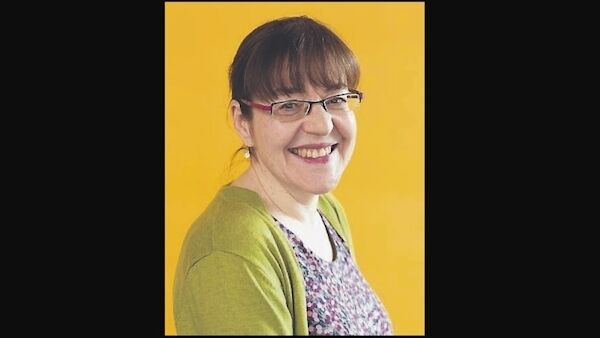Forgotten heroines: Girl power WAS the stuff of fairytales

looks at the forgotten heroines of traditional stories, and hears about strong women in modern versions, unlike the frail and dependent characters we’ve become used to.

ONCE upon a time a poor, but beautiful young wretch falls in love with a prince, marries him and lives happily ever after. We all know how the story goes, and while often lovely, so many similar tales can get a bit boring and monotonous.
But now, children’s publishing company Usborne is shaking things up with their newly published book of fairytales which shows women as adventurous and single-minded and not just frail and emotionally dependent.
In fact, just as there have always been strong and capable women in history from Cleopatra, to Eleanor of Aquitaine or Grace O’Malley, there have it seems, always been strong women in fairytales whose voices became ‘softened’ by collectors over time.
Forgotten Fairy Tales of Brave and Brilliant Girls is a collection of eight fairy tales showcasing feats of adventure and daring. According to Lesley Sims, Usborne staff writer and resident fairy tale expert, these tales, “once known were largely forgotten”.
But now, she says they have been brought together to “empower a new generation of readers”.
The stories, based on traditional tales from across Europe, include; a sleeping prince rescued by a princess, sisters who fight a goblin to rescue a bear and a girl who outwits a giant. The book also includes a story, ‘The Wise Princess’, which Shakespeare used as a basis for King Lear; and ‘The Daring Princess’, an avid DIYer who carries tools.
Each tale is illustrated and includes a short piece on the story origin. They’re also very funny and, significantly, men are not treated as idiots — important as plenty of dads also read bedtime stories.
Kate Pankhurst, bestselling author of Fantastically Great Women Who Changed the World, provides a lovely foreword saying: “Stories can enchant our imaginations and shape our view of the world; they can even make us think differently about ourselves. This book is very different to the fairy tales available when I was young … I hope they inspire readers to be brave and brilliant, and to
question anyone who says they are anything else!”
Usborne say the stories chosen already featured girls and women making their own decisions, so the subject matter hasn’t changed though authors researched tales for months.
“We felt strongly that we didn’t want to simply retell existing tales from a feminist perspective, but to findoriginal stories, which had been forgotten and bring them back into the mainstream. These are also women who don’t need men to do their fighting for them,” says Lesley Sims.
So how did we get to a stage where princesses were trapped in ivory towers waiting for princes to rescue them without thinking up escape themselves? According to Usborne, although fairytales have been told by people for thousands of years they also passed across borders and over time, “like living things, they were always changing”.
Then hundreds of years ago, “the old, wild stories began to be tamed”.
The great story-tellers — such as the Brothers Grimm gave everyone a gift by keeping old tales alive. However, collectors cooked up their own versions and many of our most
famous stories had the ideas, and ideals, of the time baked into them and women were often shown as weaker than men.

“There were more princesses waiting to be rescued than there were brave heroines who saved the day. This is true for some of our most famous fairy tales — Cinderella, Snow White and Sleeping Beauty. As these tales became famous, they overshadowed all the others.
"The brave, brilliant girls were hidden. Stories die when they are not told; we want to bring the forgotten tales back to life.”
Unsurprisingly, the demand for fairy tales which don’t feature impassive women marrying the first stranger who kisses them is growing. In this collection, sometimes heroines marry their princes sometimes they remain friends, sometimes they just adventure together.
For Irish readers, there’s also some nice and amusing Gaelic tales like Clever Molly, Kate Crackernuts and Fearless Fiona.
Rosie Dickens author of Clever Molly and the Wise Princess spent months tracking different versions of each tale.
“It’s important to have several sources so you can see the underlying shape of the story and what has been added or taken away by different authors,” she says.
Andy Prentice worked on several Usborne stories and translated ‘The Sleeping Prince’ from the original Spanish as, “the French version had been tidied up and lost a bit of magic. I’ve got three daughters and reading these stories out loud to them has been fantastic.”
Unlike Rapunzel, Rob Lloyd Jones’ account of the Nettle Princess has her doing her own rescuing from an ivory tower. “By focusing on bold female characters, these stories feel fresher and more relevant than the dusty old tales I was used to,” he says.
Author Susanna Davidson says she remembers the tale of Snow White and Rose Red from childhood and loved how it was the girls who rescued the prince. “For other re-tellings, I looked back through the tales collected by Andrew Lang and the Brothers Grimm and was amazed that hidden away, were more fairy tales with women who save the day,” she adds.
Usborne is already developing their second fairytale collection, with Tales of Brave and Brilliant Girls from Around the World due to be published in 2020.












